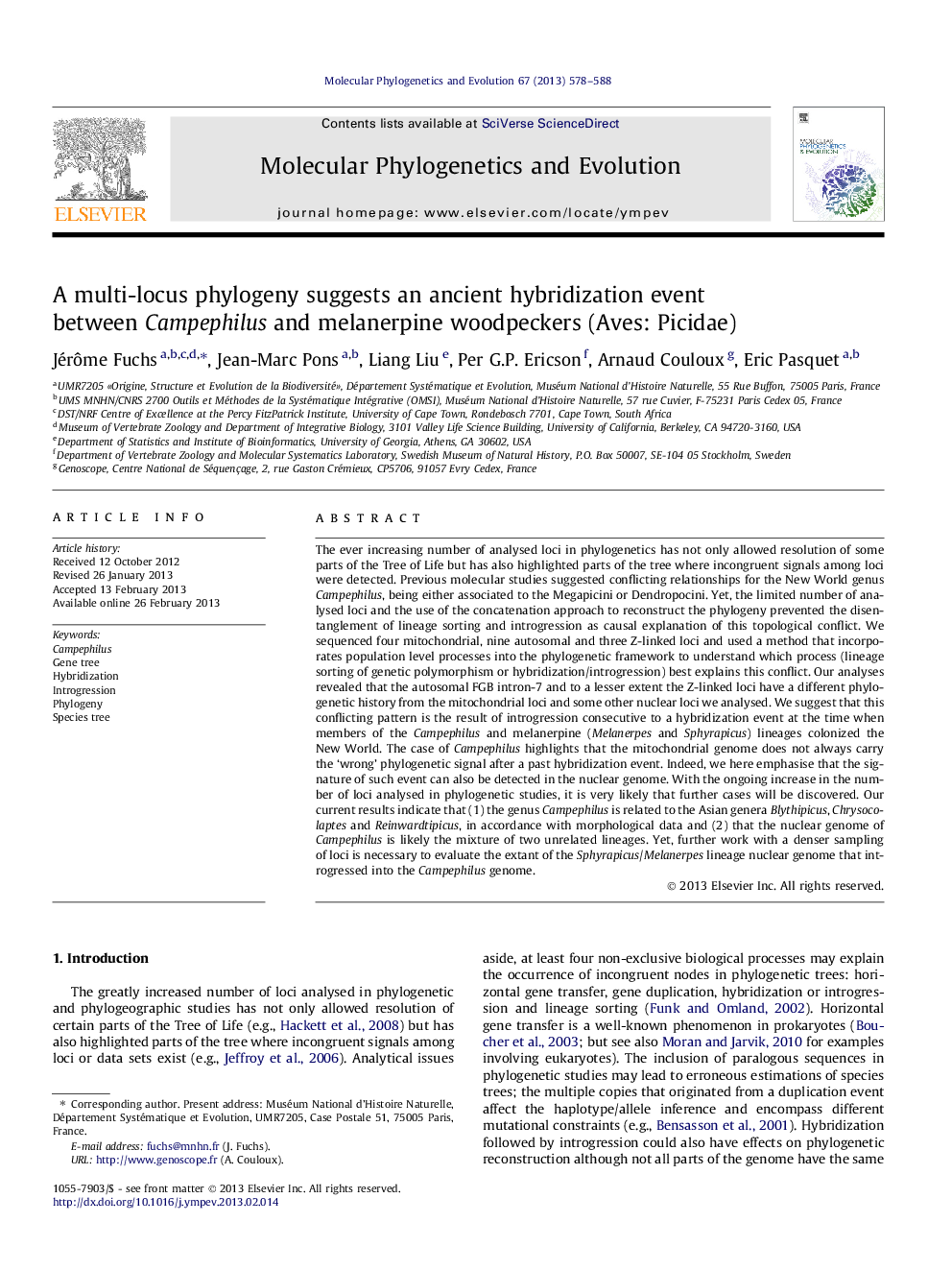| کد مقاله | کد نشریه | سال انتشار | مقاله انگلیسی | نسخه تمام متن |
|---|---|---|---|---|
| 5919834 | 1164273 | 2013 | 11 صفحه PDF | دانلود رایگان |

The ever increasing number of analysed loci in phylogenetics has not only allowed resolution of some parts of the Tree of Life but has also highlighted parts of the tree where incongruent signals among loci were detected. Previous molecular studies suggested conflicting relationships for the New World genus Campephilus, being either associated to the Megapicini or Dendropocini. Yet, the limited number of analysed loci and the use of the concatenation approach to reconstruct the phylogeny prevented the disentanglement of lineage sorting and introgression as causal explanation of this topological conflict. We sequenced four mitochondrial, nine autosomal and three Z-linked loci and used a method that incorporates population level processes into the phylogenetic framework to understand which process (lineage sorting of genetic polymorphism or hybridization/introgression) best explains this conflict. Our analyses revealed that the autosomal FGB intron-7 and to a lesser extent the Z-linked loci have a different phylogenetic history from the mitochondrial loci and some other nuclear loci we analysed. We suggest that this conflicting pattern is the result of introgression consecutive to a hybridization event at the time when members of the Campephilus and melanerpine (Melanerpes and Sphyrapicus) lineages colonized the New World. The case of Campephilus highlights that the mitochondrial genome does not always carry the 'wrong' phylogenetic signal after a past hybridization event. Indeed, we here emphasise that the signature of such event can also be detected in the nuclear genome. With the ongoing increase in the number of loci analysed in phylogenetic studies, it is very likely that further cases will be discovered. Our current results indicate that (1) the genus Campephilus is related to the Asian genera Blythipicus, Chrysocolaptes and Reinwardtipicus, in accordance with morphological data and (2) that the nuclear genome of Campephilus is likely the mixture of two unrelated lineages. Yet, further work with a denser sampling of loci is necessary to evaluate the extant of the Sphyrapicus/Melanerpes lineage nuclear genome that introgressed into the Campephilus genome.
Highlights⺠Strong conflicting signal is found in the FGB7 locus for the relationships of the genus Campephilus. ⺠Species tree analyses and simulations show that this conflict may be the results of an ancient hybridization event. ⺠Campephilus is related to members of the clade Megapicini.
Journal: Molecular Phylogenetics and Evolution - Volume 67, Issue 3, June 2013, Pages 578-588